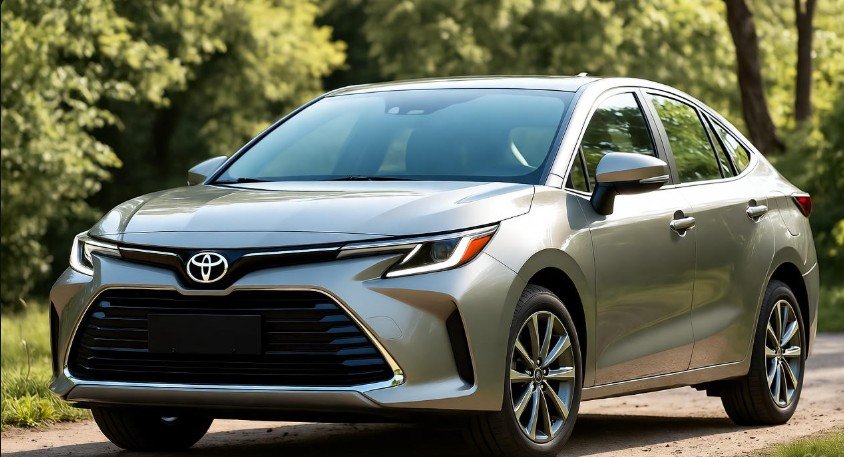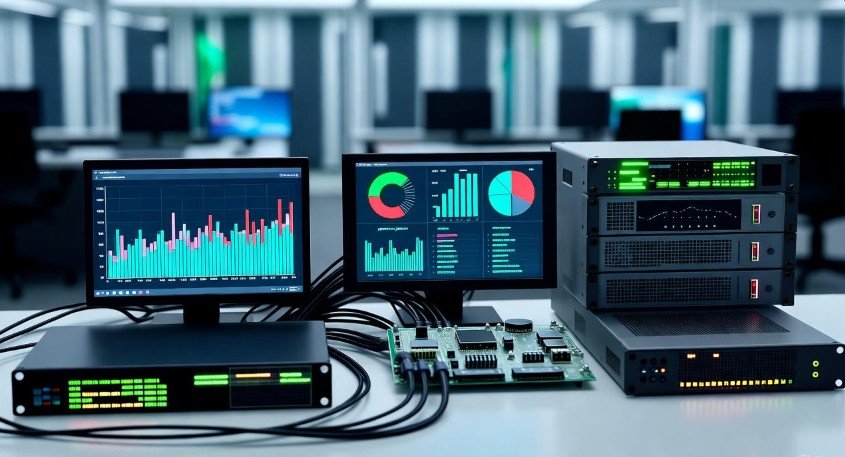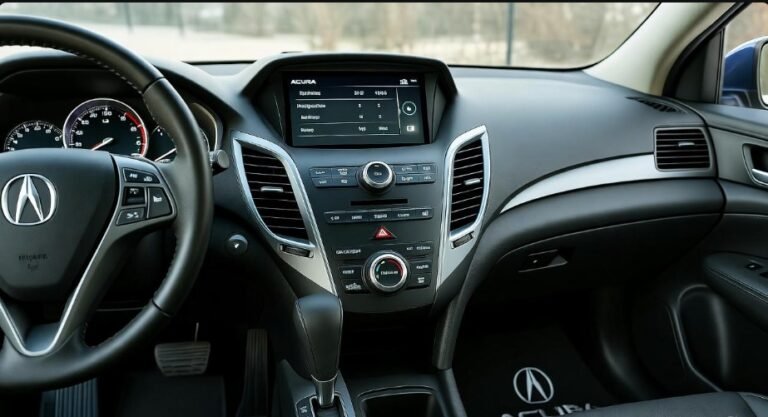What is DCM on My Toyota: Understanding the Technology

In today’s automotive world, cars are no longer just mechanical machines—they are sophisticated digital ecosystems. If you’ve ever wondered, “What is DCM on my Toyota?”, you’re not alone. The DCM, or Data Communication Module, is a crucial piece of technology in modern Toyota vehicles. It acts like the car’s personal assistant, constantly working behind the scenes to keep your vehicle connected, informed, and updated. Think of it as the nervous system of your car, linking different components, monitoring performance, and ensuring smooth communication between your vehicle and the digital world. From remote vehicle tracking to in-car Wi-Fi and mobile app integration, the DCM empowers drivers with a range of connectivity features that were unimaginable just a decade ago.
One of the most exciting aspects of the DCM in Toyota is how it elevates your driving experience. Beyond simple connectivity, it enables real-time navigation updates, vehicle diagnostics, and remote access through smartphone apps. Imagine you’re heading to a new restaurant across town; the DCM ensures your navigation is up-to-date, traffic alerts are accurate, and even emergency support is just a button away. This technology isn’t just about convenience—it’s about safety, efficiency, and peace of mind. By maintaining constant communication with Toyota’s servers, the DCM can also perform over-the-air updates, keeping your software current without requiring a trip to the dealership. For many drivers, this seamless blend of hardware and software transforms routine drives into connected, smart experiences.
Technology Behind Toyota’s DCM

The Data Communication Module is not just a fancy gadget; it’s a cornerstone of Toyota’s approach to connected vehicles. At its core, the DCM is designed to enable vehicle-to-cloud communication, meaning your car can exchange data with Toyota’s servers safely and efficiently. This data exchange facilitates remote diagnostics, allowing mechanics to pinpoint issues before they become serious problems. For instance, if your Toyota detects an abnormal engine reading, the DCM can transmit this data instantly, alerting both you and Toyota service centers. This proactive approach ensures that your car remains reliable and reduces the chances of unexpected breakdowns. In essence, the DCM acts like a guardian angel for your vehicle, quietly monitoring its health while keeping you informed.
But the technology doesn’t stop at diagnostics. The DCM also plays a critical role in telematics and connected services, enabling features like emergency assistance, stolen vehicle tracking, and remote door locking or unlocking. Imagine parking your car in a busy area and later realizing you forgot to lock it. Through the Toyota mobile app, powered by DCM, you can lock it remotely, offering security and convenience that feels futuristic. Additionally, DCM integrates seamlessly with in-car entertainment and mobile applications, providing Wi-Fi hotspots for passengers or enabling real-time updates to your infotainment system. The DCM exemplifies Toyota’s philosophy of blending innovation with practicality, making each drive smarter, safer, and more enjoyable.
How DCM Enhances the Driver Experience
The driver experience is at the heart of why Toyota invests heavily in DCM technology. Beyond connectivity, the module ensures that drivers have access to critical insights in real time. One of the key benefits is vehicle telemetry, which tracks everything from fuel efficiency to tire pressure. This data empowers drivers to make informed decisions and perform timely maintenance, reducing long-term repair costs. For example, if your DCM alerts you to a minor engine irregularity, you can address it immediately rather than facing a major issue down the road. This proactive monitoring is akin to having a personal mechanic always on call, enhancing both convenience and peace of mind.
Another way DCM enriches the driving experience is through enhanced safety features. Integrated with Toyota’s emergency response systems, the DCM can automatically contact assistance in the event of a collision. It also supports advanced navigation updates, ensuring you are always taking the most efficient route while avoiding traffic delays. Beyond this, the DCM contributes to smart vehicle personalization, learning driver habits and preferences to tailor infotainment, climate control, and even seat positioning. For drivers who value both comfort and technology, the DCM turns routine commuting into a connected, intelligent journey. In many ways, it transforms the car from a simple transportation tool into a digital companion that looks out for your needs.
Managing Your Toyota’s DCM
Understanding your DCM is just the first step; managing it properly ensures that you get the most out of your Toyota’s connectivity features. One of the simplest ways to manage the DCM is through Toyota’s dedicated mobile apps. These apps allow you to monitor vehicle diagnostics, check fuel levels, or even start your car remotely. For families, this can mean peace of mind, knowing you can check in on your car from anywhere. The DCM also allows for over-the-air software updates, so keeping your system current doesn’t require a dealership visit. Regular updates are essential not just for functionality but also for safety, as they often include enhancements to security systems and bug fixes.
Privacy and data security are paramount when it comes to connected vehicles. The DCM handles sensitive information, including location data, vehicle health metrics, and user preferences. Toyota takes this seriously, employing robust encryption and data protection protocols to safeguard user information. Drivers can also manage their preferences, choosing what data to share or limit. By combining convenience with strong privacy controls, the DCM ensures that you can enjoy all the benefits of connectivity without compromising your personal data. In essence, Toyota’s DCM balances technological sophistication with user trust, providing a secure, reliable, and highly functional driving experience.
Quick Benefits of DCM at a Glance
-
Real-time navigation updates for accurate and efficient routing
-
Remote vehicle tracking and security features
-
Over-the-air software updates for improved performance and safety
-
Vehicle telemetry and diagnostics for proactive maintenance
-
In-car Wi-Fi and mobile app integration for connectivity on the go
-
Enhanced emergency response and safety support
| Feature | Description | Benefit |
|---|---|---|
| Vehicle Telemetry | Monitors performance data | Prevents breakdowns and reduces maintenance costs |
| Remote Access | Lock/unlock car, start engine | Convenience and security from anywhere |
| Software Updates | Over-the-air updates | Keeps your car up-to-date without dealership visits |
| Emergency Assistance | Automatic alerts in accidents | Quick response for safety and peace of mind |
| In-car Connectivity | Wi-Fi and app integration | Supports entertainment and productivity on the road |
Common Issues and Troubleshooting Your Toyota’s DCM
While the DCM in Toyota is designed for reliability, like any electronic system, it can occasionally encounter issues. Some common signs that your DCM may require attention include warning lights on your dashboard, intermittent connectivity problems, or the inability to access remote services via your mobile app. For instance, if you notice that your navigation updates are delayed or your remote start feature isn’t working, it could indicate a software glitch or a connectivity issue with the DCM. In such cases, consulting your Toyota dealer or authorized service center is advisable to prevent potential complications.
Troubleshooting DCM issues can sometimes be simple. Restarting your vehicle or disconnecting the battery briefly may reset the system, resolving minor software glitches. Additionally, ensuring your mobile app is up-to-date can help maintain seamless communication between your smartphone and your vehicle. Toyota also provides diagnostic tools through service centers that can read DCM error codes and determine if any component requires repair or replacement. By understanding these common issues and how to address them, you can maintain the reliability and functionality of your DCM, ensuring a consistently smooth driving experience.
The Role of DCM in Vehicle Safety
Safety is one of the primary reasons Toyota integrates DCM technology into its vehicles. The module works as a silent sentinel, constantly monitoring the car’s systems and ensuring that any irregularities are reported in real time. In the event of an accident, the DCM can automatically contact emergency services, transmitting your vehicle’s location and status. This feature can be life-saving in critical situations, providing a quick response even if you are unable to make a call.
Beyond emergencies, DCM supports preventative safety features. For example, by monitoring tire pressure, engine health, and braking performance, the module can alert drivers before a minor issue becomes a dangerous problem. This proactive approach to vehicle safety exemplifies Toyota’s commitment to protecting both drivers and passengers. Moreover, as vehicles evolve toward more autonomous technologies, the DCM serves as a central hub, enabling advanced safety features to communicate efficiently with other systems, paving the way for smarter, safer cars.
DCM and the Future of Connected Cars
The Data Communication Module is not just about today’s driving experience; it’s a gateway to the future of automotive technology. As vehicles increasingly rely on internet connectivity and smart features, DCM will become the backbone of fully integrated car ecosystems. Features such as predictive maintenance, AI-assisted driving, and enhanced infotainment options will all depend on modules like the DCM to communicate efficiently with cloud servers and other vehicles. In this context, understanding how your DCM works isn’t just a convenience—it’s a window into the evolution of transportation.
Additionally, as more manufacturers adopt connected vehicle technologies, the DCM sets a benchmark for reliability, security, and usability. Toyota’s approach emphasizes not only technological innovation but also user trust, ensuring that drivers feel confident in sharing data while enjoying the benefits of connectivity. Whether it’s for fleet management, long-distance travel, or everyday commuting, the DCM empowers drivers to navigate the roads with more information, control, and peace of mind than ever before. It truly represents the fusion of automotive engineering with digital intelligence.
Tips for Optimizing Your Toyota’s DCM
To make the most of your vehicle’s DCM capabilities, there are several practical tips every driver should follow:
-
Keep software up-to-date: Regular updates enhance performance, security, and access to new features.
-
Monitor connectivity: Ensure your mobile app is properly paired and that your data plan or Wi-Fi is reliable.
-
Review alerts: Pay attention to notifications about vehicle health or updates—they help prevent issues before they escalate.
-
Protect your privacy: Adjust app settings to manage the data you share and trust Toyota’s security protocols.
-
Schedule periodic service checks: Professional inspections ensure that the DCM and related systems remain fully functional.
By following these tips, you can maximize the benefits of your DCM, ensuring your Toyota remains a safe, connected, and intelligent driving companion.
Frequently Asked Questions (FAQs)
1. What does DCM stand for in Toyota vehicles?
DCM stands for Data Communication Module, which manages connectivity and communication between your car, mobile apps, and Toyota’s servers.
2. Can I use DCM features without an internet connection?
Some features, like vehicle telemetry or emergency alerts, may work offline, but most connectivity functions, such as remote access and over-the-air updates, require an active internet connection.
3. How do I know if my DCM is malfunctioning?
Warning lights, failed app connectivity, or delayed navigation updates can indicate a DCM issue. If you notice these signs, consult a Toyota service center.
4. Does DCM affect my vehicle’s safety?
Yes. The DCM supports emergency notifications, vehicle health monitoring, and other preventative safety features.
5. Is it safe to share vehicle data through DCM?
Toyota prioritizes privacy and uses robust encryption and security measures to protect your data, making DCM communication safe.
6. How often should DCM software be updated?
It’s recommended to check for updates regularly or enable automatic updates to ensure your vehicle has the latest features and security enhancements.
7. Can I manage DCM settings myself?
Yes, many settings can be managed through Toyota’s mobile app, allowing you to control remote access, notifications, and connectivity preferences.
8. Will DCM work in all Toyota models?
Most modern Toyota vehicles come equipped with a DCM, but features may vary depending on the model and trim level.
Conclusion
Understanding the DCM on your Toyota is essential for maximizing your vehicle’s performance, safety, and connected capabilities. From real-time diagnostics and navigation to emergency alerts and software updates, the DCM acts as the invisible hub linking your car to the digital world. By keeping your system updated, monitoring alerts, and leveraging the features available through Toyota’s mobile apps, you can ensure your driving experience remains safe, seamless, and intelligently connected.
In a rapidly evolving automotive landscape, the Data Communication Module is more than just a component—it’s a bridge between today’s vehicles and tomorrow’s connected, smart mobility. Taking the time to understand and manage your DCM empowers you to enjoy every journey with confidence, convenience, and peace of mind.





